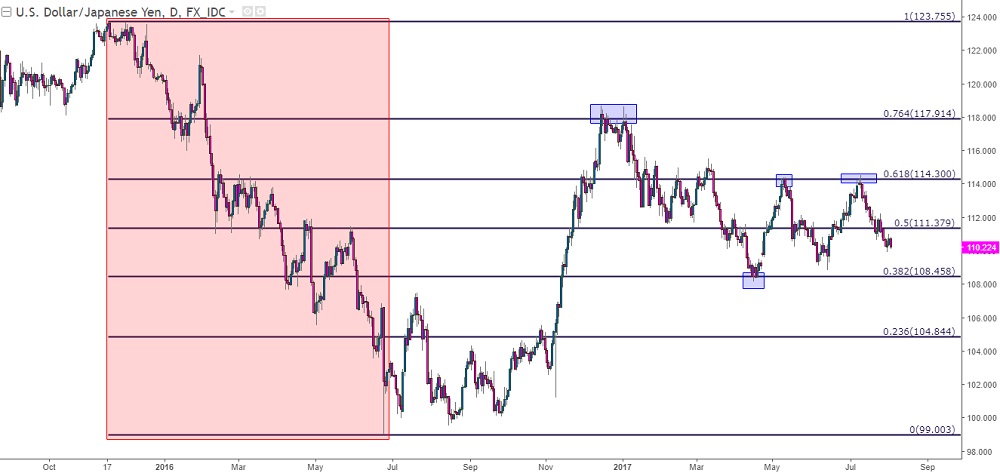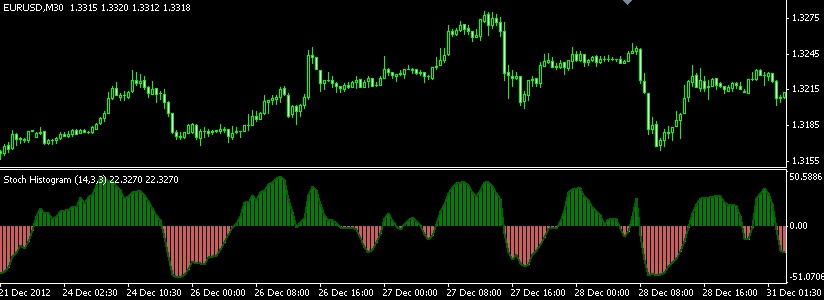Price action is one of the most popular trading strategies among forex traders. These methods rely heavily on support and resistance level. How to find these levels?
Price action is a phenomenon that helps you determine support and resistance levels on a chart. This is a popular trading strategy among both beginners and experts. Here is how to find support and resistance using price action:

What are Support and Resistance?
Price levels of support and resistance are depicted as horizontal lines on a price chart. These price levels are formed when price bar highs are connected to other price bar highs or price bar lows are connected to price bar lows. When the price movement of a market turns around and moves in the other direction, leaving a peak or trough (swing point) in its wake, a support or resistance level is created in the market.
Trading ranges may be defined by support and resistance levels. These levels can also be observed in trending markets when a market retraces its previous movement and leaves behind swing points. These levels of support and resistance will frequently be respected by price. To put it another way, they have the propensity to restrain price movement, that is, until the price, of course, bursts through them.
Support and Resistance using Price Action
A price action trader's best buddy is the market's support and resistance levels. An entrance scenario can likely occur when a price action entry signal arises at a crucial level of support or resistance. A good risk-reward ratio is typically formed at key levels of support and resistance in a market.
The key level provides you with a barrier to place your stop loss order beyond. Because it has a high probability of being a turning point in the market, there is usually a good risk-reward ratio formed at key support and resistance points. The price action entry signal confirms that the price may move away from the important level of support or resistance, which may take the form of a pin bar signal or another signal.
Tips When Using Price Action
- Try not to go crazy attempting to draw every level on your charts. This may take a very long time. The key daily chart levels are the essential ones. Thus, your goal should be to locate them. We presented some instances of critical daily chart levels above.
- When you create horizontal lines of support or resistance, they won't always hit the precise high or low of the bars that they link. This is because those highs and lows aren't always consistent. There are situations in which it is acceptable for the line to connect bars that are slightly below the high or slightly above the low. Realize that this is not an exact science. Rather, it is a talent and art that you will become better at with practice, experience, and the passage of time. This is the essential thing to keep in mind.
- If you are unsure whether or not to act on a specific price action entry signal, you should ask yourself whether the price is currently trading at a crucial level of support or resistance. It is possible that it would be more beneficial to pass on the signal if it is not at a crucial level of support or resistance.
- Suppose a price trading technique like a pin bar or inside bar method originates from a confluent level of support or resistance in a market. In that case, it has a considerably larger probability of success than if it forms from any other level in the market.
Price action is not hard to understand, but for new traders, it might take some time to grasp it. To learn about this strategy, new traders can start by reading price action books available online.

 Dedicated FREE FOREX VPS
Dedicated FREE FOREX VPS Free FOREX Virtual Private Server
Free FOREX Virtual Private Server MT4 Demo Contest, Get $500
MT4 Demo Contest, Get $500 Sign Up for an Account, Claim 60% Deposit Bonus
Sign Up for an Account, Claim 60% Deposit Bonus Free MT4/MT5 VPS 2024
Free MT4/MT5 VPS 2024 Send E-mail and Get Free Merchandise
Send E-mail and Get Free Merchandise $1K Refer a Friend Bonus for Pepperstone Pro clients
$1K Refer a Friend Bonus for Pepperstone Pro clients Maximize Your Earnings with 100% Deposit bonus
Maximize Your Earnings with 100% Deposit bonus Trade to Win, $5,000 Monthly Demo Contest
Trade to Win, $5,000 Monthly Demo Contest Claim 30% + 15% Deposit Bonus from LiteFinance
Claim 30% + 15% Deposit Bonus from LiteFinance












11 Comments
Halsey
Jun 7 2023
There are many ways to determine support and resistance in forex trading. You can do this just by looking at price charts, but you can also use specific tools (technical indicators). You can also combine the 3 simple ways above to find a powerful support or resistance level, for example, a low swing level that corresponds to a psychological level, or the R2 pivot level that corresponds to a high swing level...
How to determine Support and Resistance based on Pivot Points? why is the accuracy of this pivot point level lower than the others? when viewed from the acquisition method, this is actually the most reliable because the calculation is the clearest. Thank you
Bilqish
Jun 8 2023
There are many ways to determine support and resistance, but many traders use three options. That is, using psychological levels, swing high and swing low levels, and levels are calculated using pivot points.
Furthermore, in fact, because support and resistance levels are based on market sentiment, not market sentiment, the accuracy of support and resistance levels calculated based on pivot points may differ from swing high or swing low levels and psychological levels lower than when observed directly. Get up. Pivot point support and resistance levels are commonly referred to by day traders, especially when there are no significant support or resistance levels during a trading period.
Estrith
Jun 15 2023
I have a question sir, How do you determine Support and Resistance based on Pivot Points? why are the resistance and support levels strong with horizontal lines? please help me thank you, sir
George
Jun 16 2023
Day traders like to use Pivot Points to determine Support and Resistance by calculating closing and opening prices daily (Daily Pivot), although there is also a Weekly Pivot. Even though it can sometimes meet expectations, the accuracy of Support and Resistance based on this Pivot Point is lower than at other levels.
On the other hand, the resistance and support levels are made based on observations and in the form of horizontal lines reflect the actual state of market sentiment, while those created from pivot points are based on mathematical calculations, not based on actual market sentiment. The one based on horizontal lines is much more valid. Note the following resistance and support levels on the EUR/USD weekly which have remained valid over the years:
Tabhita
Jun 25 2023
When it comes to determining support and resistance levels in forex trading, there are different methods available. One common approach is to use pivot point levels, which are calculated based on past price data. However, the accuracy of pivot points as support and resistance levels are considered relatively low compared to psychological levels or price swings.
So, how do you determine psychological levels in your trading? Do you rely on specific price points or key levels that have shown resistance or support in the past? Additionally, how do you assess the strength and reliability of these levels?
One way to gauge the strength of support and resistance levels is by observing price behavior. If a price has failed to break a certain level in the past, it suggests that it may struggle to breach that level again in the future, making it stronger as a support or resistance. Have you noticed this pattern in your trading experience?
Larry Marry
Sep 2 2023
I think at this point most traders know about metatrader 4 being the most dominant slash popular trading platform in the market right now. How could they not though, the platform is literally everywhere it's offered by practically every major brokers out there and it's recommended by loads of senior traders as well. MT4 plugins however, are not that common apparently. I asked some of my fellow trader friends and many of them said they didn't use any plugins or add-ons to their platforms. My question is how many plugins can you use at the same time and what are other useful plugins would you recommend? Thanks in advance.
Barbara
Sep 3 2023
Oh there are many plugins that you can use right this second and most of them are free! MT4 is a terrific platform on its own, but there are limitations that might be quite bothersome for advanced traders. With MT4 plugins, you can enhance the functionalities of your platform. I believe technically there's no limit as to the number of plugins that you can run simultaneously, but please keep in mind that running loads of plugins or EAs may slow down your computer.
As to the best plugins to use, I have some in mind although in reality the choice should depend on your personal needs. For traders in general, I would recommend installing the AutoChartist plugin, which offers automated chart pattern detection and real-time warnings. It's useful for all traders as it provides various market data and insights. Signal Centre is also really good to get trading signals, even though you're not supposed to rely on them 100%. Still, it's a great tool to gain ideas and insights.
Phil Khun
Sep 13 2023
Actually, I'm too beginner to understand the pin bar pattern. I've seen extraordinary things in pin bars. there are long tails guys, guys. but I don't know, what are the potential advantages and disadvantages of using a long-tailed pin bar compared to other candlestick patterns?
Leopard
Sep 15 2023
Using long-tailed pin bars as a trading signal offers several potential advantages and disadvantages compared to other candlestick patterns.
Advantages of Long-Tailed Pin Bars:
Disadvantages of Long-Tailed Pin Bars:
Kise Ryota
Sep 21 2023
How can we know if a website is simply another copycat of the original? Every time I visit a website, my antivirus sends me a warning about its safety. Additionally, the website has SSL encryption, making it secure to enter. However, assuming the copycat website is extremely sophisticated and has replicated all the aforementioned features perfectly, what can we do to identify and avoid falling into the trap of copycat websites? Any suggestions on how to protect ourselves from these deceptive websites?
Urashini
Sep 22 2023
I totally get your concern about those sneaky copycat websites! It's important to be on the lookout and protect ourselves from falling into their traps. Here are a few simple tips that I got to help you stay safe:
Watch out for funky website URLs. Copycats often use URLs that look similar to the original, but with slight changes or misspellings. Example, OctaFX become OtcaFX.
Check for security features. While SSL encryption is a good sign, it's not foolproof. Look for other trust indicators like security seals or trust logos on the website.
Be wary of sketchy emails and links. Don't go click-crazy on links you receive in emails or from random sources. Copycats love to trick people with phishing emails and dodgy links. Always double-check the sender's authenticity and hover over links to see if they match the official website.
Look for contact info and customer support. Legit websites usually provide clear contact details like phone numbers, emails, and physical addresses. If a website lacks that info or gives you the runaround, that's a red flag right there.
Keep your antivirus game strong. Make sure you have a reliable antivirus program and keep it up to date. It'll help sniff out and block malicious websites and suspicious activities.
Trust your gut.If something feels fishy or too good to be true, trust your instincts. It's better to be safe than sorry. Steer clear of websites that give you that uneasy feeling.